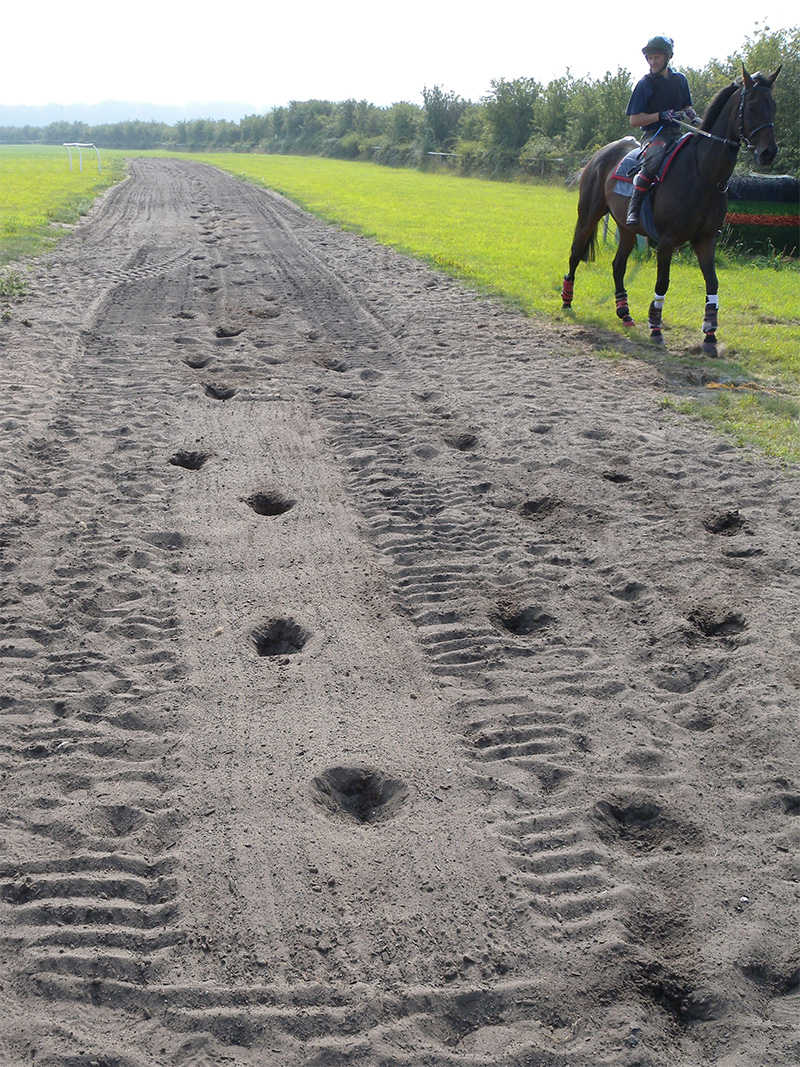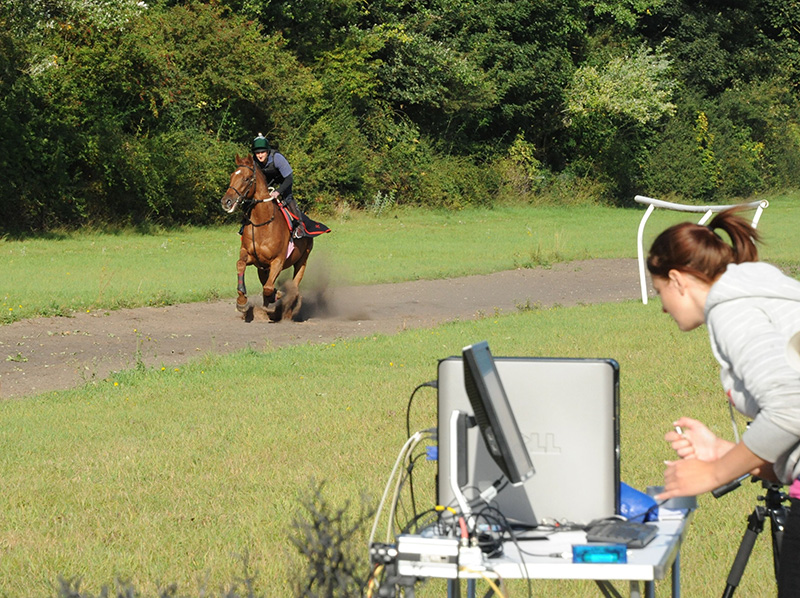New innovative study proves racehorses use less energy to gallop than previously thought
Researchers from the RVC have made use of force plate technology to accurately measure the external work of galloping in racehorses.
This technique, which has never been used for such large animals at high speed before, showed that horses had much lower levels of external work - how much work the horse has to do to move relative to its environment - than had previously been reported when studied using different methods.

An instrumented runway of sensors was planted under a section of the racing surface at the British Racing School in Newmarket, by the academics, who work in the RVC’s Structure and Motion Lab. A professional jockey then rode seven thoroughbred racehorses over this specialist equipment, allowing the researchers to directly measure the external mechanical work of galloping by measuring the forces they exerted on the runway.
The RVC’s study produced lower values than those previously reported for external work in galloping horses. Estimated via different methods, those previously reported high external work values are at odds with the fact that horses evolved to move at high speeds over long distances. A high external work value would make moving over long distances much harder. The RVC’s new results support that thinking.
The RVC researchers were then able to calculate the apparent muscle efficiency of galloping horses by combining the external work values from this study with published values for metabolic work (the conversion of food into energy used by muscles) and internal mechanical work (how much work is needed to move the limbs relative to the body). They found that the horse’s efficiency values were between 37-46%.
It is expected that the RVC’s findings will provide useful insight into the movement of racehorses and will contribute details towards explaining how racehorses can gallop so efficiently over long distances.
Commenting on the unique methodology of the study, Dr Zoe Self Davies, Postdoctoral Research Associate at the RVC, said: “This was really challenging data to collect and, to our knowledge, it is the first time high speed galloping force plate data have been collected from such a large animal.”
The RVC’s Professor Alan Wilson, who specialises in locomotor biomechanics and also contributed to the study, added: “This data provides fresh insights into these remarkable animals.”
The full study has been published in the journal Biology Letters:
Z. T. Self Davies, A. J. Spence and A. M. Wilson. External mechanical work in the galloping racehorse 15 Biology Letters doi.org/10.1098/rsbl.2018.0709

Notes to Editors
For more information please contact:
- Alex Cassells (alexander.cassells@plmr.co.uk) or Ploy Radford (ploy.radford@plmr.co.uk)
- Press Line: 0800 368 9520
About the RVC
- The Royal Veterinary College (RVC) is the UK's largest and longest established independent veterinary school and is a constituent College of the University of London.
- The RVC offers undergraduate, postgraduate and CPD programmes in veterinary medicine, veterinary nursing and biological sciences.
- It is currently the only veterinary school in the world to hold full accreditation from AVMA, EAEVE, RCVS and AVBC.
- In 2017, the RVC received a Gold award from the Teaching Excellence Framework (TEF) – the highest rating a university can receive.
- A research-led institution, the RVC maintained its position as the top veterinary institution in the Research Excellence Framework (2014), with 79% of its submission being rated as world-class or internationally excellent.
- The RVC also provides animal owners and the veterinary profession with access to expert veterinary care and advice through its teaching hospitals: the Beaumont Sainsbury Animal Hospital in central London, the Queen Mother Hospital for Animals (Europe's largest small animal referral centre), the Equine Referral Hospital and the Farm Animal Clinical Centre located at the Hertfordshire campus.
You may also be interested in:
-
Hop to it: New research explores the muscle anatomy of frogs in relation to their movement
Researchers from the Royal Veterinary College (RVC) and UCL have uncovered anatomical differences …

